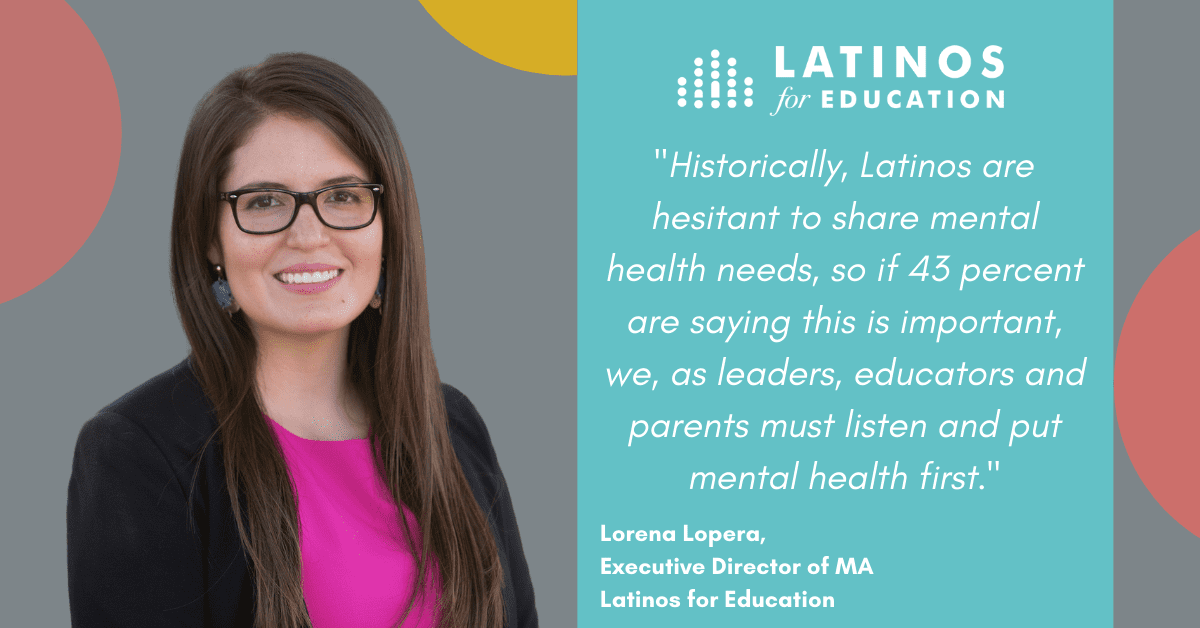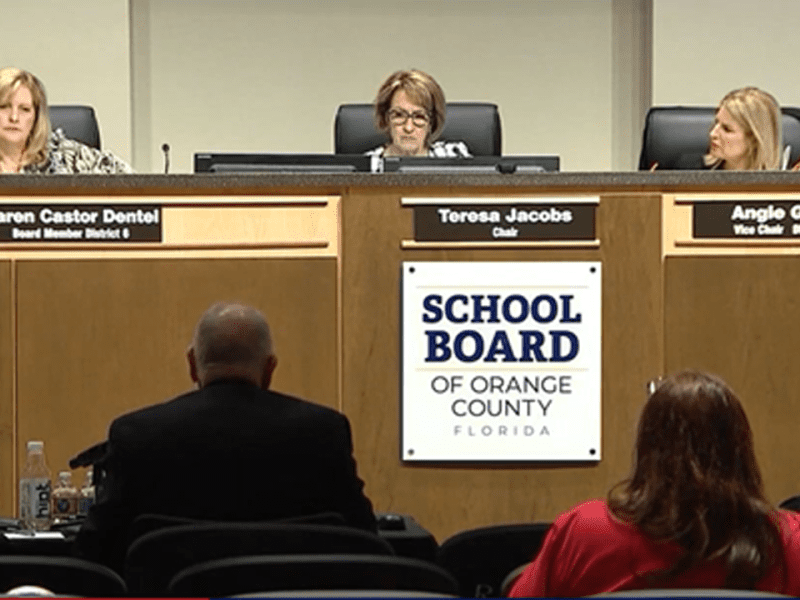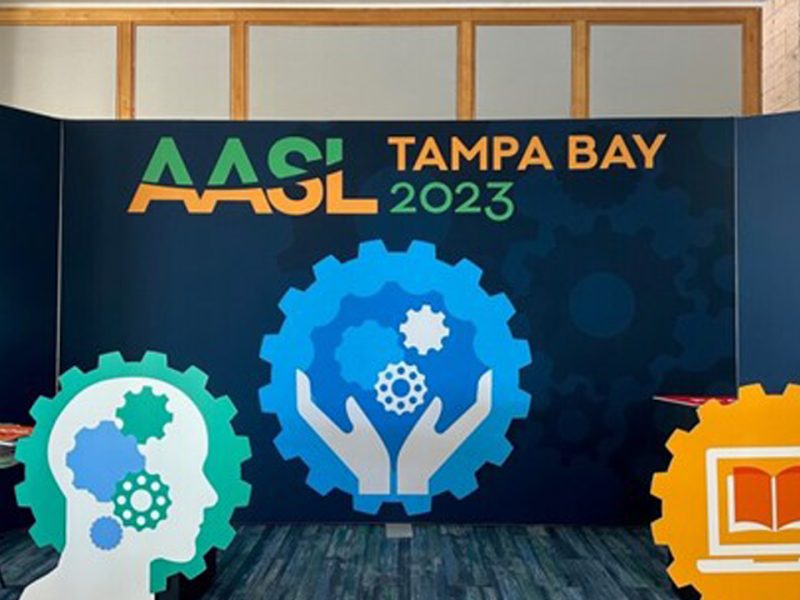Using Tech To Address Student Mental Health During COVID-19
Latinos for Education | by Lorena Lopera | December 4, 2020
With COVID-19 infection rates climbing across the Commonwealth, we seem poised to continue virtual learning for longer than we had hoped. This means we cannot ignore the toll this pandemic and disruption to learning is taking on our children.
Expecting students to learn to their full potential is shortsighted when they spend their days fearing COVID-19 and all its ramifications — for themselves, their friends and their families. The realities of the pandemic, from guardian unemployment to eviction and death have made the Latinx community anxious. We make up 12 percent of the Commonwealth’s population but almost 30 percent of COVID-19 cases. We are a community that tends to “shake it off” and “get over it.” But we at Latinos for Education recently surveyed hundreds of Latinx parents throughout the Commonwealth and found that 43 percent are fearful of a decline in their children’s mental health during the pandemic. Historically, Latinos are hesitant to share mental health needs, so if 43 percent are saying this is important, we, as leaders, educators and parents must listen and put mental health first. Luckily, we can prioritize well-being using some of the same tools we use for virtual learning: technology and broadband.
The best way to listen to parents is by putting into their hands the tools and resources they need to address their children’s mental health needs. Even though districts are working to get devices and broadband into the hands of every student, many students and families are still disconnected. This is especially true for Latino students and families. We must immediately address the digital divide to move forward.
Elected officials must focus on funding and public-private partnerships that fill in resource gaps for our schools. We need working relationships between the schools, the businesses that can provide technology, and our world-class medical facilities, which can offer mental health experts. Together, they can offer our students both much-needed technology and support.
Some schools have prioritized whole-child care through student engagement and partnering with local mental health professionals, but this programming is disparate from school to school, so some students benefit while others flounder. Our leaders must address the mental health needs of every student with the same urgency that we ensure they have food on their tables. Here are just some of the steps we can take now:
- Schools and school leaders must find creative ways to provide enrichment activities for students and families. While the focus for most schools immediately became academics, now that schools have been engaging in virtual learning for over 7 months, it is important to prioritize the support services and activities that keep students healthy and learning. At my child’s school, we have biweekly virtual activities that many families have come to expect and enjoy. Sometimes the activity is a virtual concert, a game, a magic show, a movie night, or an art activity but the goal is always the same – to stay connected with each other and build community as well as provide a window of normalcy in everyday activities to students and families.
- Schools need to check-in on families. When staff within a school – from teachers, to principals, counselors, and support staff – are able to build touch points with families, they are able to identify what issues families are dealing with, and why some students might not be logging into class or performing at their best. Families might be short on rent, or caring for a sick relative, or just feeling exhausted. It is the responsibility of school leaders to understand the barriers students and families experience to log on or engage. Armed with this information we can begin to connect families to services as well as report on the trends in district and city needs.
- School districts must remove anxiety around the unknown by actively engaging families of all backgrounds. Almost one-quarter of Mass. residents speak a language other than English in their homes, but our schools are not prioritizing these families. Every document a district disseminates must be available in multiple languages (and in real-time) for non-English-speaking parents. The same goes for school events, they must give parents the ability to participate remotely in a language that they prefer. Our non-English speaking families matter. District and government leaders need to recognize this and address this need.
If you take nothing else away from my plea, remember this: if you are a guardian, educator, essential worker, or business owner, you can and must take action to help our students’ mental health during this pandemic. As a collective, we must rise to the challenge of serving our community and prioritizing children. Let’s each do our part to prevent the spread of COVID-19, care for our neighbors, protect our most vulnerable, and offer help so that our children have the chance to experience a healthy childhood.
About Lorena Lopera
Lorena Lopera is Executive Director, Massachusetts at Latinos for Education. Previously, she served as Director of Development at BES, where she led fundraising efforts nationwide. Prior to this, Lorena worked with various organizations including City Year, The Posse Foundation, Epiphany School and Sociedad Latina, focusing her work on education equity. She immigrated from Colombia as a child and knows how much hard work, resilience, and support goes into finding the right opportunities for success. She holds a B.A. in Hispanic Studies from Boston College. Lorena is a proud BPS Parent and current Co-Chair of the Hurley K-8 School Site Council.






